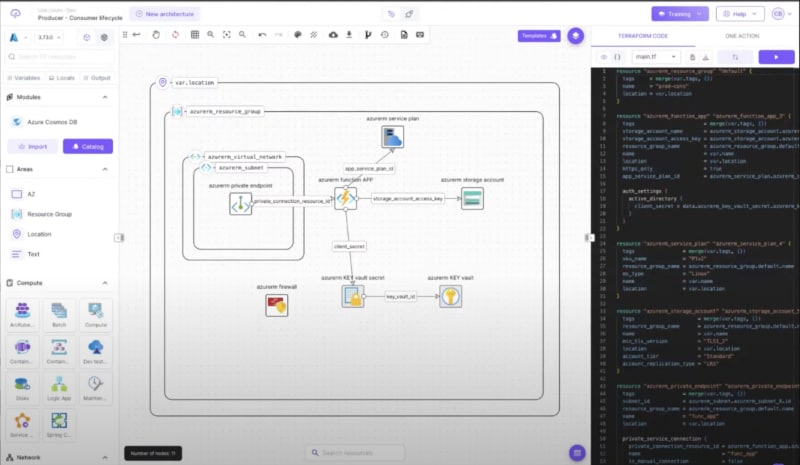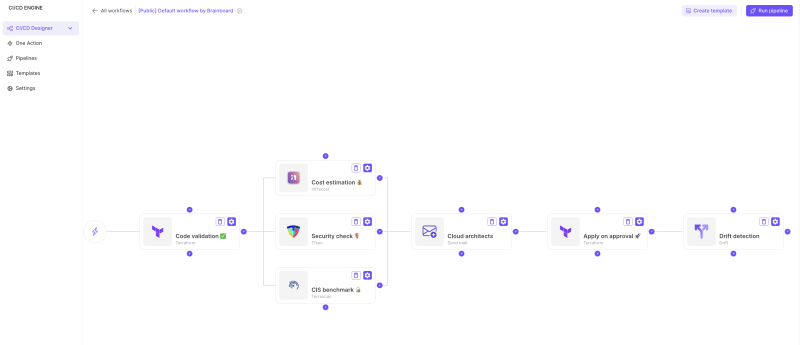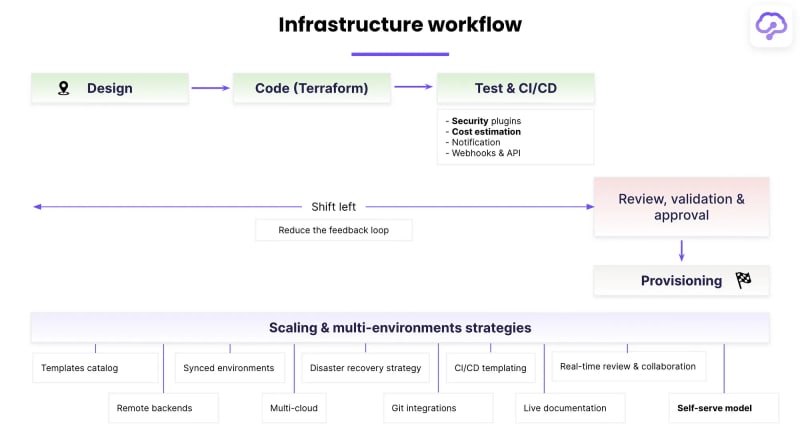In a recent insightful session, we delved into the nuances of building cloud infrastructures, focusing on the producer/consumer model.
This approach is crucial for Cloud Architects, Platform Engineers, DevOps professionals, and anyone interested in the technical aspects of cloud-based solutions.
Understanding Producer/Consumer Model
The core concept revolves around simplifying cloud infrastructure for various teams within an organization. We explained that this model segregates those who design and create the infrastructure (producers) from those who merely use it (consumers). This separation is pivotal, especially considering the complex nature of cloud environments and the need for dedicated teams to manage them.
Implementing the Producer/Consumer Model
Using Brainboard, we demonstrated building a basic cloud infrastructure, highlighting the process from design to deployment. This hands-on illustration underlined the importance of creating a system that enables patterns or self-serve modules for autonomous use. The goal is to eliminate bottlenecks often created by centralized cloud management teams.
Tackling Challenges and Maintenance
We further addressed challenges in implementing this model across multiple teams and multiple deployments. Key points included managing the learning curve for users, choosing the right format for implementation, and the significance of having a central platform for efficient management.
The Role of CI/CD in Producer/Consumer Model
CI/CD plays a vital role in this architecture, particularly in automation. We emphasized the importance of understanding the bigger picture beyond CI/CD, involving steps like testing, integrating feedback, validating, approving, and provisioning. Post-deployment, activities like scaling, managing multi-environments, and disaster recovery strategies are also essential.
Advantages of the Workflow and Long-Term Management
The producer/consumer model not only facilitates ease of use on day one but also offers a streamlined process for maintaining and scaling cloud infrastructures over time. This includes continuous updates and synchronization across various environments, crucial for maintaining consistency and reducing drift in infrastructure.
Conclusion
The session concluded with an affirmation of the producer/consumer model’s efficiency in cloud infrastructure management. This approach empowers users to contribute and understand their technical environments better, fostering a more collaborative and effective working model.
You can start building your producer/consumer model here 👉 https://app.brainboard.co








Top comments (0)